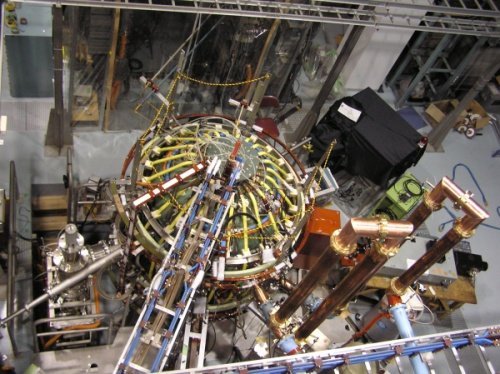EJIRI Akira
(Professor/Division of Transdisciplinary Sciences)
Department of Complexity Science and Engineering/Plasma Physics and Nuclear Fusion

Career Summary
1987: Graduated, Faculty of Science, The University of Tokyo
1992: Withdrawal from Doctoral Course of The University of Tokyo
1992: Research Associate, National Institute for Fusion Science
1994: Doctor (Science) from The University of Tokyo
1998: Research Associate, The University of Tokyo
1999: Associate Professor, The University of Tokyo
2021: Professor, The University of Tokyo
Educational Activities
Graduate school: Turbulence-induced Transport, Elementary Course of Experiments on Complexity Science and Engineering
Undergraduate: Fluid Mechanics, Plasma Physics
Research Activities
"Plasma is a mixture of charged particles. Each particle generates electric and magnetic fields, and interacts with other particles through these fields. Since, the interaction is a long-range force, plasmas often exhibit collective phenomena. In addition, instabilities arise from temperature or pressure inhomogeneities, and plasmas tend to approach homogeneous and thermal equilibrium states. However, dissipations (such as collisions and diffusion) are very weak in hot plasmas, and consequently states that are far from thermal equilibrium and homogeneous can be sustained. Thus, these plasmas cannot be described using conventional statistical mechanics, and they also differ from chaotic systems with few degrees of freedom.
Plasmas are highly nonlinear and are in nonequilibrium states, and innovative approaches need to be developed to investigate them. Fluctuations occur in nonlinear and nonequilibrium plasmas; however, it is difficult to measure these fluctuations since plasmas have a very high temperature. Thus, new diagnostics techniques and analysis methods need to be developed.
Spherical tokamaks (STs) are very attractive because of its high performances (e.g., high temperature and high density) in a relatively compact device. Taking advantage of ST, our group started to design and to construct a new ST device (called TST), and started to perform experiments using it in 1995. In 1998, we improved this device (called TST-2)(1), and started to use it in 1999. These devices were designed and assembled by ourselves. In 2002, TST-2 was temporarily moved to Kyushu University to study high power RF heating (2). In 2003, it was moved to Kashiwa campus. Present research targets are (i) turbulence, (ii) RF heating and current drive, (iii) control of energy and particle transport, (iv) MHD stability and (v) development of innovative diagnostics.
Domestic collaboration partners are the National Institute for Fusion Science (Gifu), Kyushu University (Fukuoka), Japan Atomic Energy Agency (Ibaraki). We also collaborate with Princeton Plasma Physics Laboratory (U.S.A.) and Culham Laboratory of The United Kingdom Atomic Energy Authority.
 TST-2 spherical tokamak device
TST-2 spherical tokamak device

Literature
1) Takase Y, et al. Nucl. Fusion 41,1543 (2001).
2) Ejiri A. et al. Nucl. Fusion 46, 709 (2006).
Other Activities
The Physical Society of Japan (JPS)
The Japan Society of Plasma Science and Nuclear Fusion Research (JSPF)
Coordination Committee of Fusion Energy Forum
Future Plan
The current main research targets in TST-2 are RF start-up and heating. Collaborations between our group and the above-described institute are carried on. In addition, development of innovative plasma diagnostics, particularly, three-dimensional fluctuation measurements are important.
Messages to Students
We encourage students to develop their own instruments, tools and programs, since it assists them to gain an understanding the principles involved. Such experience is important for designing and constructing innovative devices. On the other hand, huge projects, as represented by fusion science, require division of labor and professional specialists for particular aspects. In such a huge project, a few people are required who manage the whole project and lead others. Our laboratory aims to develop such human resources by performing experiments in a relatively small-scale project and by encouraging students to think and act for themselves.
